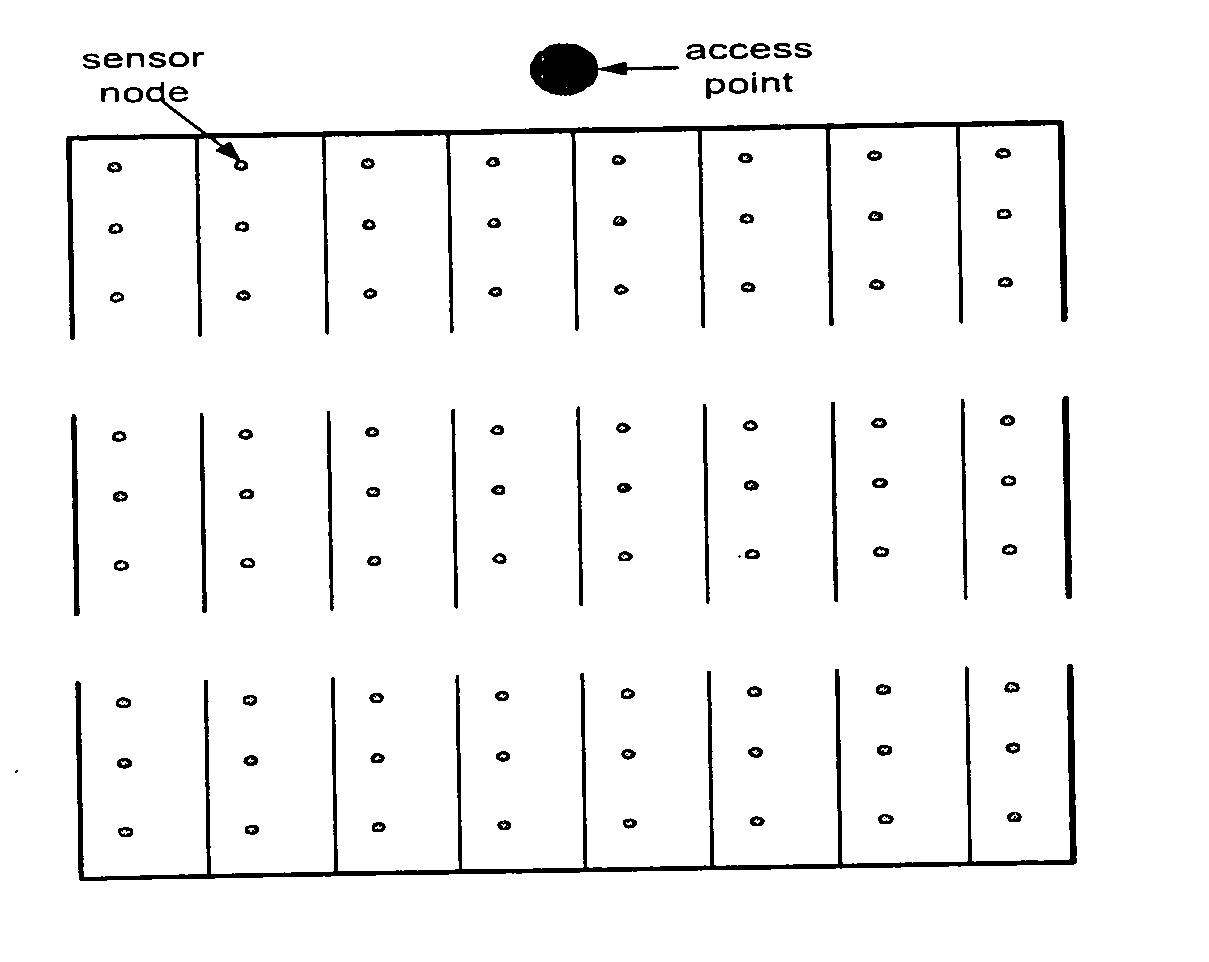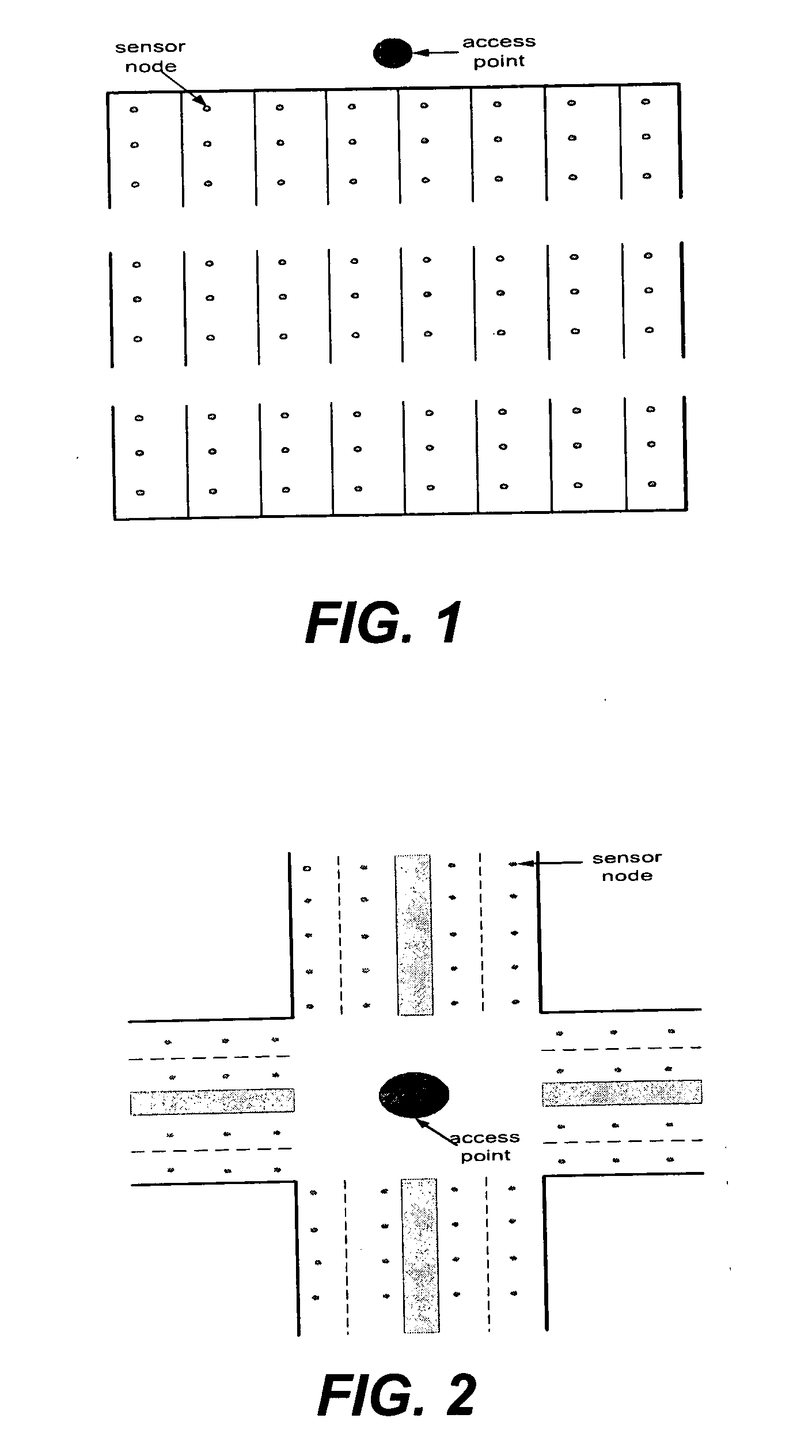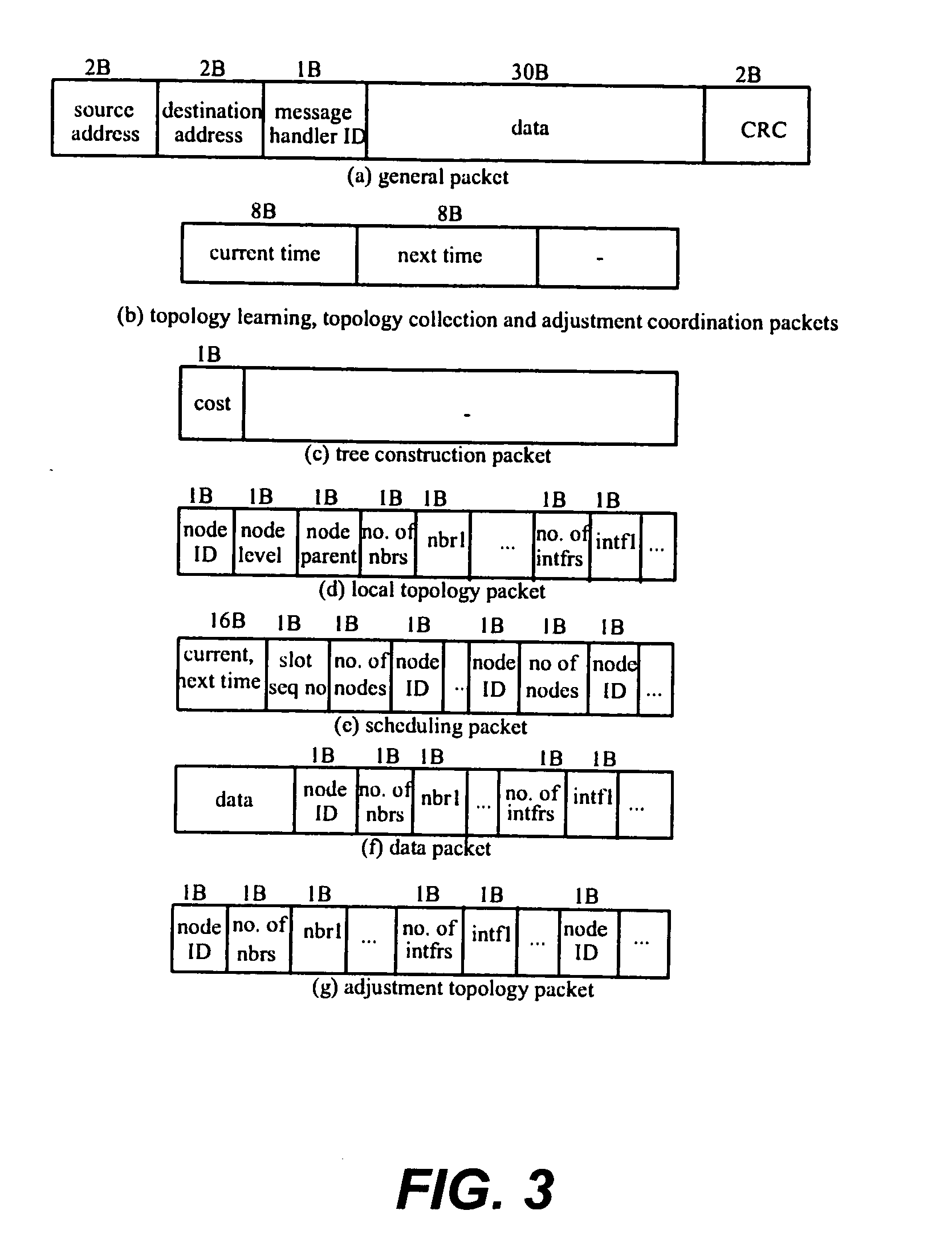Power efficient wireless system for sensor network
a wireless system and sensor network technology, applied in power management, instruments, high-level techniques, etc., can solve problems such as energy consumption, packets to be corrupted by another packet, and protocol design constraints, and achieve the effect of reducing the number of collisions
- Summary
- Abstract
- Description
- Claims
- Application Information
AI Technical Summary
Benefits of technology
Problems solved by technology
Method used
Image
Examples
case 1
[0110] Case 1: The tree graph G=(V,E) is linear, that is each node uεV has at most one child. The interference graph C=(V, I) is such that I=Ø.
case 2
[0111] Case 2: The tree graph G=(V,E) is general. The interference graph C=(V, I) satisfies the ancestor property, that is, there do not exist u, v, b such that (u, v)εI and |d(u, b)−d(v, b)|>1. This represents the case where shortest path routing is used with the cost of each path being equal to the number of nodes on that path and only nodes that can hear each other can interfere, which is the assumption of previously proposed TDMA scheduling algorithms.
case 3
[0112] Case 3: The tree graph G=(V,E) is general and the interference graph C=(V, I) is such that the maximum difference between the levels of two interfering nodes is K.
PUM
 Login to View More
Login to View More Abstract
Description
Claims
Application Information
 Login to View More
Login to View More - R&D
- Intellectual Property
- Life Sciences
- Materials
- Tech Scout
- Unparalleled Data Quality
- Higher Quality Content
- 60% Fewer Hallucinations
Browse by: Latest US Patents, China's latest patents, Technical Efficacy Thesaurus, Application Domain, Technology Topic, Popular Technical Reports.
© 2025 PatSnap. All rights reserved.Legal|Privacy policy|Modern Slavery Act Transparency Statement|Sitemap|About US| Contact US: help@patsnap.com



